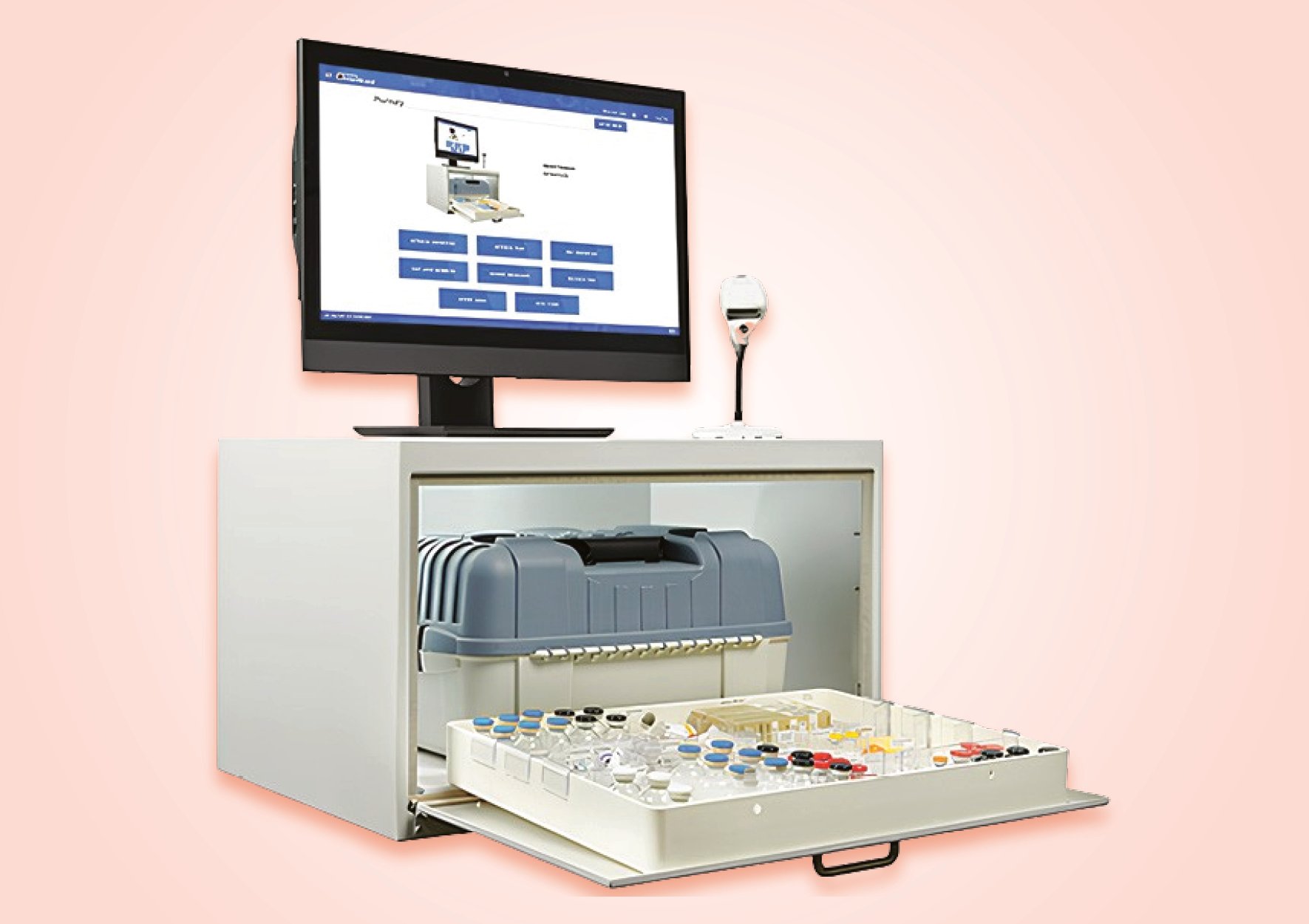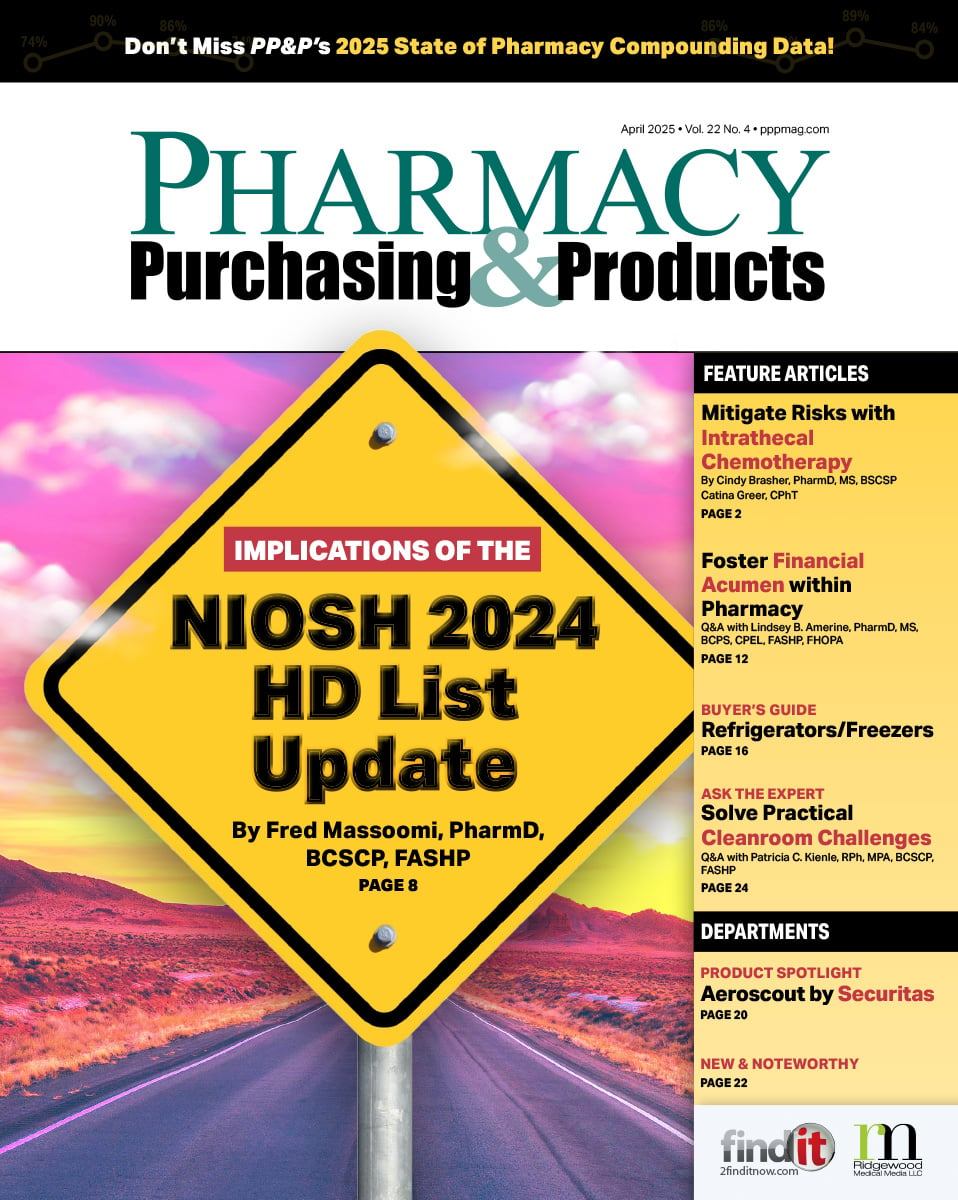- Show Menu
- Contact Us
- FAQs
- Reader Service
- Survey Data
- Survey Winners
- Testimonials
- Upcoming Events
- Webinars
- White Papers
AcuDose-Rx with RightStock from McKesson
Aultman Hospital in Canton, Ohio, is the largest hospital in Stark County, with 808 licensed beds and 575 active physicians. In 2011, Aultman saw approximately 28,000 admissions, 13,400 OR cases, and 88,000 ER visits, with the pharmacy department averaging 12,000 total dispensed doses dispensed per day. Given this volume, our goal was to establish highly efficient stocking procedures. It was clear that we needed to limit stock-outs in order to ensure that ADC restocking occurred only once per day.
Although Aultman takes a hybrid approach to medication distribution—largely dependent on nursing unit type and location—we primarily employ centralized distribution. For example, two ICUs have medication servers in the rooms supplemented by automated dispensing cabinets (ADCs), while other critical areas use ADCs to provide high volume medications supplemented by patient cassette fill. Most of the medical and surgical units are primarily filled by patient cassette, with ADCs supplementing first doses, narcotics, and PRN medications.
In March 2008 we began a fairly comprehensive pharmacy redesign that included finding a replacement ADC solution that would provide a fully integrated system with reliable security and patient safety features, such as closed-loop restocking and safe scanning of medication bar codes. We found these features were demonstrated by McKesson’s AcuDose-Rx . We began the implementation of AcuDose-Rx in January 2009 and approximately half of the cabinets we contracted for were installed over a two-month span. In addition, the newly renovated pharmacy department was complimented by several other technology acquisitions, including a robot, three carousels, three high-speed packagers, and a narcotic vault. In 2011, we installed the remainder of the cabinets, which include McKesson’s RightStock inventory optimization software, to bring us to a total of 78 ADCs throughout our facility. On the medical and surgical units, the ADCs stocked with high-volume medications now serve approximately 15 beds each, while the ADCs stocked with narcotics, PRNs, and first doses serve approximately 30 beds each.
Managing Stock Outs
When we first began using ADCs in 2009, we developed simple, periodic reports to monitor their use. This data was manipulated to provide suggested minimums and maximums based on average and peak usage, and this process was applied to several ADC products used in the past. Unfortunately, this process was time consuming and factors such as seasonal variations and new therapy trends made maintaining the integrity of the data a constant effort.

Previously, we analyzed the costs for stock-outs at our facility and estimated that it cost as much as $8 per non-narcotic drug, assuming that a technician would have to stop their immediate task, obtain the drug, have it checked, and deliver it to the cabinet; a process that could take half an hour. This cost could escalate to $16 per stock-out for narcotic drugs due to the additional time required to obtain the drug from a narcotic vault and additional pharmacist involvement. Based on this information, we determined it would be more productive and cost-effective to properly manage our stock outs, rather than chase them. Fortunately, McKesson had just developed the RightStock software for AcuDose-Rx and this proved to be a timely addition to our management strategies.
With our current system, stock levels can be adjusted daily if desired simply by enabling a dynamic restocking flag for specific drugs in specific cabinets. Users also have the option to generate par and maximum levels—by peak or average usage—and select by the number of days stock is desired for each. At the end of each day, all dynamic stock par and maximum levels are readjusted based on new peaks or averages. To cope with unexpected surges, there is a pocket capacity field that can limit the number of medications that can fit into a pocket in the ADC so that they are not overfilled.
Maintaining Stable Inventories
After some trial and error, we found the best fit for our facility is setting the levels to peak for the previous 30 days, while keeping our maximum at four days of stock and our par at two days; this has had a substantial impact on our workflow. Prior to conducting manual reporting, stock levels were based on educated guesses and resulted in approximately 100 to 200 daily stock-outs. With the implementation of manual reporting, daily stock-outs declined to approximately 70 to 100, but this was still a concern for us. However, upon implementing the RightStock software, we saw a significant decrease in off-schedule stock-outs, especially for critical drugs, and now we average less than 10 per day.
Given that we have 15 off-site ADCs (located up to eight miles away), we were particularly motivated to establish accurate stock levels. In addition, our nursing staff is much happier with the new system, as they now have immediate access to all the medications they need. With the exception of some of the specific nationwide shortages that challenge all of us, we are able to maintain stable working inventories with good turnover and virtually zero stock-outs on each nursing unit. Both nursing and pharmacy staff are now better able to complete their tasks with minimal interruption, which is always a positive step.
 Jim Toohey is the co-director of pharmacy at Aultman Hospital in Canton, Ohio. He received his BS in pharmacy from The Ohio State University and his masters in hospital pharmacy from the University of Minnesota. Additionally, Jim participated in an ASHP accredited residency at United Hospitals in St. Paul, Minnesota.
Jim Toohey is the co-director of pharmacy at Aultman Hospital in Canton, Ohio. He received his BS in pharmacy from The Ohio State University and his masters in hospital pharmacy from the University of Minnesota. Additionally, Jim participated in an ASHP accredited residency at United Hospitals in St. Paul, Minnesota.
Like what you've read? Please log in or create a free account to enjoy more of what www.pppmag.com has to offer.








